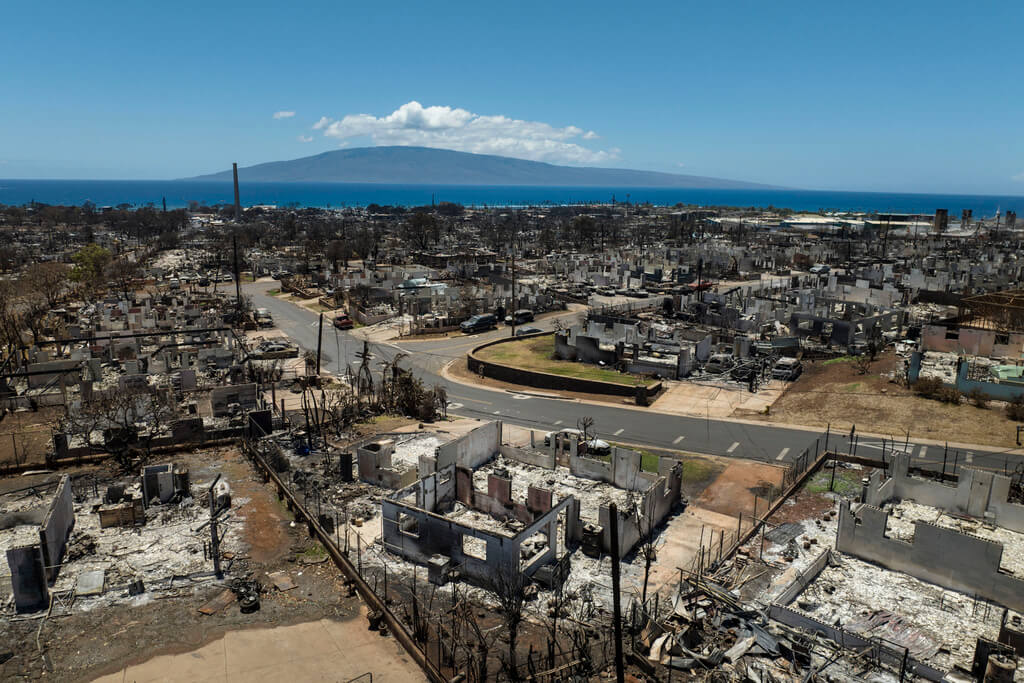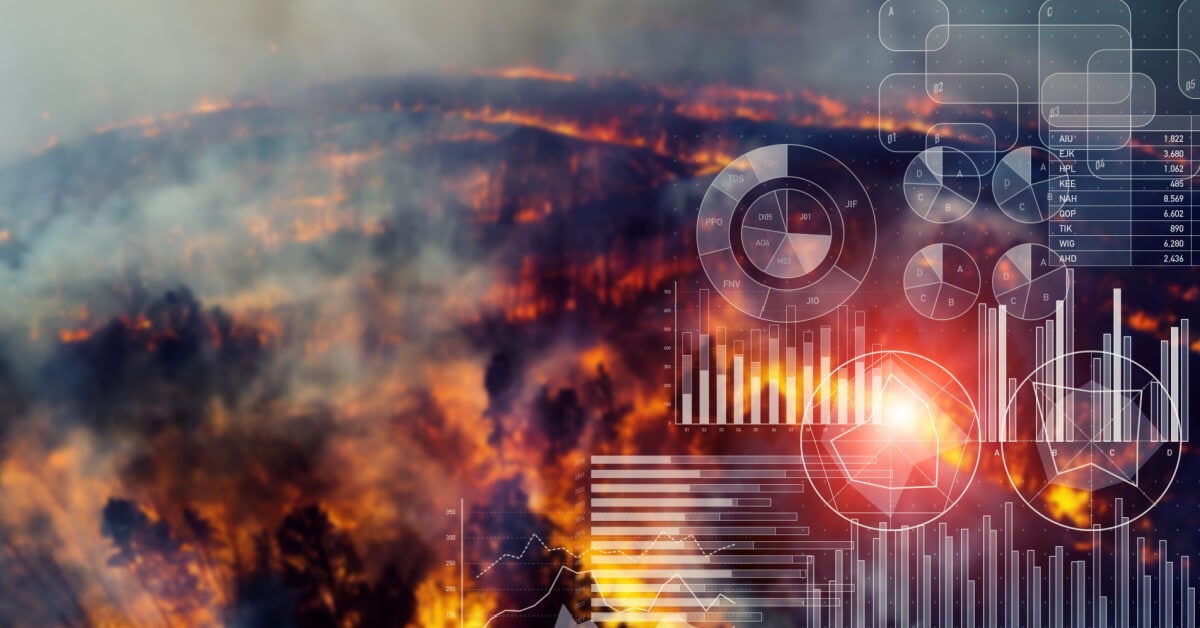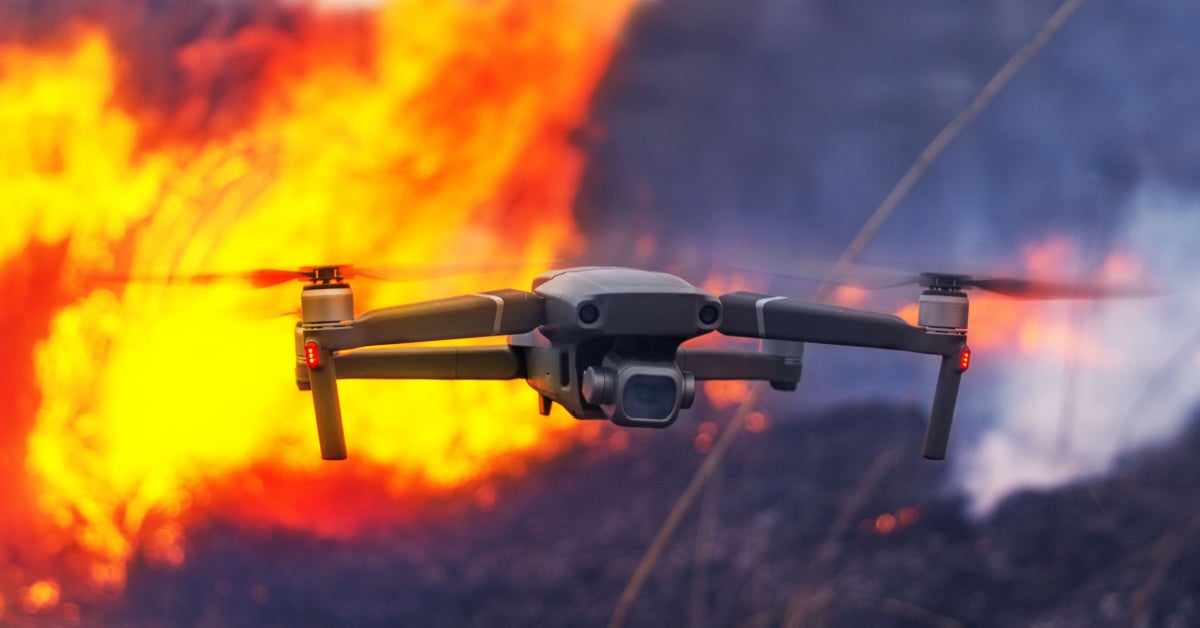Our planet is constantly facing several threats. From global warming and pollution to resource wastage – Earth has suffered at the hands of human mistakes. Wildfires are one of the more serious repercussions of our impact on the planet. According to the Global Fire Monitoring Center, 87% of all wildfires that occur each year are generally caused by humans. However, wildfires are becoming more prominent due to windy conditions, dry environments, and heat waves. Since we are in the AI and Robotics era, now we need to explore advanced wildfire technology that can help to fight in a smarter way.
Canada Wildfires
In August 2023, over 20,000 people had to leave Yellowknife, Canada, while firefighters fought to stop wildfires from reaching the city. According to the Canadian Interagency Forest Fire Center, there were 1,054 active wildfires in Canada. Out of these, 230 were in the Northwest Territories. Additionally, authorities considered 669 of the wildfires out of control. According to a study by Copernicus, the smoke from the Canadian wildfires has led to "significantly degraded air quality" throughout North America. This has caused plumes of smoke to be pushed into northeast regions in the coming weeks. That's why the use of advanced wildfire technology is essential for Canadian wildfires.
Brazil Wildfires
Similarly, Brazil wildfires have also made headlines recently. In September, a heat wave spread across the northeastern Bahia state which prompted record temperatures. Firefighters were forced to battle wildfires fanned by strong winds and abnormally high temperatures. Over 150 military firefighters were mobilized by the state to extinguish fires across different areas. Hawaii was also added to the list of wildfire-struck areas.
Hawaii Wildfires
The Hawaii wildfires swept across parts of Maui in August 2023 and killed at least 97 people - making it one of the nation’s deadliest disasters. Lahaina, a town on the western shore of Maui, was the main source of the wildfire when an active power line seemingly fell due to high winds. The cost for residents to rebuild their homes has been astounding – reaching up to an estimated US$ 5.5 billion for the damaged areas in West Maui and the revival of the popular tourist destination. Wildfires have a devastating impact on communities, businesses, and critical infrastructure – which is one of the many reasons why actively fighting wildfires has become a need.

Image source: https://www.mauinews.com/
Why Is Advanced Wildfire Technology Necessary?
The World Health Organization has claimed that climate change and the increasing urbanization of rural areas have streamlined wildfire events. Wildfire outbreaks are seemingly getting more extreme regarding acres burned, duration, and intensity. The organization also noted that wildfires can disrupt transportation, communications, water supply, and power and gas services. Despite evacuations, wildfires can have devastating – even lethal – consequences for the health of humans and animals.
The smoke from a wildfire is a mixture of hazardous air pollutants. WHO has noted that the smoke from wildfire has been associated with premature deaths in the general population and worsens many chronic diseases. Firefighters and emergency response workers are also greatly impacted by injuries, burns, and smoke inhalation. Aside from the health aspect, wildfires can also heavily impair a population’s economy, infrastructure, and development. Fortunately, the modern age and innovation have allowed us to create an array of firefighter technology to help with fighting wildfires across the globe.

The Next Generation Wildfire Technologies
As technology develops, humans are adapting to these drastic changes as well. Wildfire technology has been a continuously evolving field to help us combat the spread, destruction, and lasting effects of wildfires. Fire departments are making use of these technologies to save lives and ensure firefighter safety. Some of the greater breakthroughs in this field include:
Using Artificial Intelligence (AI) to Map Out Wildfire Fighting
Artificial Intelligence has been one of the most incredible breakthroughs of the 21st century. As AI evolves, we’ve found new and innovative ways to use it in our best interests. Firefighting technology has benefitted from AI as well by being a brilliant tool for predictive and mapping technologies. Dr. Ilkay Altintas developed a platform called Firemap designed to reduce the response time for attacking a wildfire. The AI-based wildfire technology uses a system of mountaintop cameras powered by AI to scan the horizon for puffs of smoke and triangulate the exact location of the fire.
The information is then combined with localized weather data and real-time video from an aircraft dispatched to the scene. A computer modeler then uses the data to predict the trajectory and direction of the wildfire to prevent its spread. Altintas is also developing AI technology to help control prescribed fires as well – burning areas that are at high risk for wildfires before they can ignite. Her team’s efforts will show how the prescribed fire will behave in the actual environment before it's even set and, potentially, reduce the risk that a prescribed burn will get out of control. Apart from AI innovations, cloud computing has also been useful in this cause.
Empowering Wildfire Technology Through Cloud Computing
Scientists have also figured out how to predict wildfires through the use of cloud computing. Cloud computing enables the storage, processing, and real-time analysis of large amounts of data – making it invaluable as a tool for constructing predictive algorithms. A research paper by Xiaoying Zhang detailed the way a cloud computing method called MapReduce which is capable of parallel data processing could help mitigate wildfires. The paper revealed that cloud computing and big data analysis could effectively help with processing a model of fire prevention strategies and evaluations. As fire season begins and natural resources come under pressure, wildfire management needs the fast-processing power and capabilities of computing systems to stay ahead. The Internet of Things can also help connect these reliable systems.
Connecting to the Internet of Things (IoT) for Wildfire Fighting
The Internet of Things is an ever-expanding network of connected devices. As more industries rush to digitalize operations, the IoT has increased its reach exponentially. One of these evolving industries includes forestry sectors where actively preventing wildfires is crucial. Monitoring forests can help spot and stop wildfires before too much damage is done. The IoT acts as an interconnected set of sensors across forest environments. The network allows devices to analyze real-time events and collects data on temperature, humidity, and air quality to detect wildfires. While the IoT has helped us stay connected, technology has also allowed us to introduce robotics to the wildfire fight.
Firefighting Robots
Firefighting robots might seem like the plot of a bad movie but they’re also one of the great ways technology has been helping us prevent wildfires. Firefighters put their lives and bodies on the line each day to stop the spread of fires. Fortunately, technology has evolved enough to use robots in their place. The AI for Good webinar discussed how autonomous firefighting robots can assist in predicting and locating fires, collecting hazardous data as well and extinguishing flames.
Robots are capable of fighting flames in areas too dangerous for firefighters to venture into. They can help in areas with collapsing roofs, small openings, or toxic surroundings. The robots can also be used to collect data through cameras and sensors from within the wildfire for real-time analysis and response. While the technology is met with a certain level of hesitation, the companies rolling out these advanced machines maintain that these firefighting robots are created to assist firefighters – not replace them. Another branch of machines doing our wildfire fighting for us includes drone technology.
Drones and Machine Learning Fighting Wildfires
Drones are the ideal technology for surveillance projects. When it comes to wildfires, detection and response are crucial to preventing injuries, deaths, and destruction. Drones have been actively used to combat wildfires by providing extra eyes where manned aircraft struggle to go. These devices can use thermal or regular imaging that can help analyze the direction of the fire and the rate of its spread.
While civilian drones can interfere with most firefighting techniques, the drones used by the fire service have been useful in mapping, hotspot detection, and more. The drone’s data is utilized by firefighters on the ground to help with evacuation processes and active firefighting. Studies have shown that more than 900 state and local agencies in the U.S. use drones for police, fire, and emergency services. Technology is doing more than its share for the environment and helping us lead to a sustainable and prepared future where fighting wildfires can be a lot easier.

The use of drones in firefighting
Wildfire Technology enables Environmental Protection
The development of technology has a responsibility to the protection of our planet. As we evolve and innovate, we have to consider the impact we have on our environment. Digital sustainability goes a long way in ensuring a better future for us all. Wildfires are one of the most prominent and damaging effects of climate change and human ignorance. This is why the development of wildfire technology to prevent these events is crucial to saving our planet.
Sustainable technology goes a long way in creating a community that strives to protect our global futures with our greatest innovations. This teaches us to look to technology as a means of helping one another rather than a way of benefiting the few at the top. Sangfor is dedicated to ensuring the reality of that for us all. Through innovative and sustainable developments, we can give our planet the protection it deserves.
Sangfor is dedicated to ensuring the most advanced future in cybersecurity and cloud computing. That includes using the best technology when fighting wildfires and making the planet safer for us all. Wildfires have lasting and debilitating consequences for entire communities, businesses, and governments. Several innovative wildfire technologies exist to help us avoid these disasters and actively fight wildfires. However, it is only through our collective embrace of these new technologies that we can truly make a difference in fighting wildfires.
For more information on Sangfor’s cybersecurity and cloud infrastructure solutions, please visit www.sangfor.com.





